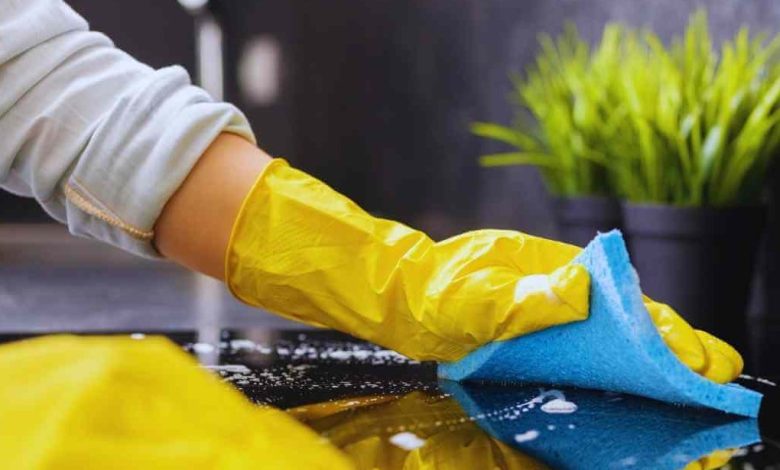Greening Your Clean-Out: The Environmental Consequences of House Clearance

House clearance, whether for residential or commercial properties, can have significant environmental implications. From the disposal of unwanted items to the transportation of materials, every aspect of the process can contribute to environmental degradation if not managed responsibly.
House clearance involves the removal and disposal of items from a property, typically during moves, renovations, or decluttering projects. While it’s often seen as a necessary task, the environmental impact is often overlooked. However, with growing concerns about sustainability, it’s crucial to consider how our actions affect the planet.
Types of House Clearance
House clearance can encompass various scenarios, including clearing out residential homes or commercial properties. Each type presents its own set of challenges and considerations in terms of environmental impact.
Residential house clearance may involve disposing of furniture, appliances, electronics, and other household items. On the other hand, commercial property clearance may include office furniture, equipment, and supplies.
Environmental Issues Associated with House Clearance
Landfill Waste
One of the primary concerns with traditional house clearance methods is the generation of landfill waste. Many items end up in landfills, where they can take years, if not centuries, to decompose. This contributes to environmental pollution and habitat destruction.
Pollution from Transportation
The transportation of materials during house clearance can also have a significant environmental impact. Fuel emissions from trucks and vans contribute to air pollution, while transportation routes may disrupt ecosystems and wildlife habitats.
Hazardous Materials
Certain items commonly found in house clearance, such as old paint cans, batteries, and electronic devices, contain hazardous materials that can leach into the soil and waterways if not disposed of properly. These substances pose risks to human health and the environment.
Sustainable Alternatives
To mitigate the environmental impact of house clearance, there are several sustainable alternatives that individuals and businesses can explore.
Recycling and Upcycling
Rather than sending items to the landfill, recycling and upcycling offer opportunities to repurpose materials and reduce waste. Many materials, including paper, glass, plastic, and metal, can be recycled into new products.
Donations to Charities or Organizations
Items that are still in good condition can be donated to charities or organizations that support those in need. This not only reduces waste but also benefits the community by providing essential items to individuals and families.
Hiring Eco-Friendly Clearance Companies
Choosing clearance companies that prioritize environmental sustainability can make a significant difference. These companies may employ eco-friendly practices such as recycling, donating, and responsibly disposing of items.
Government Regulations and Policies
Government regulations and policies play a crucial role in managing the environmental impact of house clearance. Waste management regulations and environmental protection laws set standards for responsible disposal practices and promote sustainable alternatives.
Benefits of Environmentally Friendly House Clearance
Embracing environmentally friendly house clearance practices offers several benefits beyond reducing environmental impact.
Reducing Carbon Footprint
By diverting waste from landfills and minimizing transportation emissions, environmentally friendly house clearance helps reduce carbon emissions and combat climate change.
Preserving Natural Resources
Recycling and upcycling materials conserve natural resources by reducing the need for raw materials extraction. This helps protect ecosystems and biodiversity.
Supporting Sustainable Practices
Choosing sustainable clearance methods supports the growth of eco-friendly industries and encourages others to adopt similar practices. It demonstrates a commitment to environmental stewardship and corporate social responsibility.
Case Studies
Several successful case studies highlight the positive outcomes of environmentally friendly house clearance projects. These examples serve as inspiration for individuals and businesses looking to minimize their environmental footprint.
Tips for Minimizing Environmental Impact
Planning Ahead
Careful planning can help minimize waste and maximize the use of sustainable clearance methods. Consideration should be given to donation opportunities, recycling options, and responsible disposal practices.
Choosing Responsible Clearance Methods
When selecting clearance methods, prioritize options that align with environmental sustainability goals. Research clearance companies that have a track record of eco-friendly practices and transparent waste management policies.
The Role of Technology in Environmental House Clearance
Advancements in technology are driving innovation in environmental house clearance.
Innovations in Waste Management
New technologies are emerging to improve waste sorting and processing, making it easier to recycle materials and reduce landfill waste.
Tools for Eco-Friendly Clearance
From online platforms that facilitate item donation to mobile apps that connect users with eco-friendly clearance services, technology is streamlining the process of environmentally friendly house clearance.
Educational Initiatives
Raising awareness about the environmental impact of house clearance is essential for promoting sustainable practices.
Raising Awareness
Educational initiatives can inform individuals and businesses about the importance of reducing waste and adopting eco-friendly clearance methods.
Promoting Sustainable Practices
By providing information and resources, educational initiatives empower people to make environmentally conscious choices during house clearance projects.
Challenges and Limitations
Despite the benefits of environmentally friendly house clearance, there are challenges and limitations to consider.
Cost Considerations
Sustainable clearance methods may come with higher upfront costs compared to traditional options. However, the long-term environmental benefits often outweigh the initial investment.
Accessibility Issues
Not all areas have access to recycling facilities or eco-friendly clearance services, posing challenges for individuals and businesses seeking sustainable solutions.
Future Outlook
The future of house clearance lies in the continued development and adoption of sustainable practices.
Potential Advancements
As technology advances and awareness grows, we can expect to see more innovative solutions for minimizing the environmental impact of house clearance.
Conclusion
The environmental impact of house clearance is a significant concern in today’s world. By embracing sustainable alternatives, individuals and businesses can mitigate their environmental footprint and contribute to a healthier planet.
FAQs
What are the main environmental concerns with traditional house clearance methods?
Traditional house clearance methods contribute to landfill waste, air pollution from transportation, and the improper disposal of hazardous materials.
How can individuals contribute to reducing the environmental impact of house clearance?
Individuals can reduce their environmental impact by recycling, donating items in good condition, and choosing eco-friendly clearance services.
Are there any tax incentives for choosing eco-friendly clearance options?
Some regions offer tax incentives or rebates for individuals and businesses that adopt sustainable clearance practices. Check with local authorities for more information.
What are some common misconceptions about sustainable house clearance?
One common misconception is that sustainable clearance methods are too expensive. While there may be higher upfront costs, the long-term environmental benefits often justify the investment.
How can businesses integrate environmental considerations into their clearance processes?
Businesses can prioritize sustainability by partnering with eco-friendly clearance companies, implementing waste reduction strategies, and educating employees about environmentally responsible practices.









